| The star-shaped brownish-maroon flowers of dog-strangling vine. This picture makes them seem almost pretty. Don’t be taken in. |
One of Toronto’s worst – if not the very worst – of weeds is now making babies. Millions and millions and millions of them. It’s an ideal time to nip all that fecundity in the bud.
Dog-strangling vine or pale swallowwort (Vincetoxicum rossicum syn. Cyanchum spp.), which I’ve ranted written about here (in spring), here (in fall), and here (in winter), is taking over our city. No, really.
Tell your friends. Tell your family. Tell your neighbours. Stop strangers on the street and tell them, too. Don’t let DSV get a toe-hold in your garden or neighbourhood.
Yes, it’s that bad. Worse than garlic mustard. Much, much worse. Each of these flowers can make a narrow pod full of air-borne seeds. The individual shoot will multiply vegetatively from the base each year. Plus, this non-native plant has a vigorous underground root system that quickly colonizes vast areas. How vast? Keep scrolling. Then keep your eyes open around town. You’ll soon be as horrified as I am.
If you like butterflies, you’ll be dismayed to learn that this milkweed relation confuses Monarch butterflies into laying eggs on it. Larva that hatch on these leaves don’t get the protection that milkweed provides. Bye bye, butterflies. And bye bye, native milkweeds, too, along with a host of other native wildflowers, choked out by the voracious growth of these bullies. Everywhere.
- You can try to do something about it by recognizing DSV in all its stages and removing it immediately from your property or common lands nearby.
- Cut (don’t pull) the stem off at the ground level. Pulling can break the roots underground, encouraging the plant to throw up new shoots at each of the break points.
- Do not rototill if DSV has infested your property. Each root segment can produce a plant. Cut vines to the ground, and smother the area with heavy plastic or a heavy layer of wet newspaper and mulch.
- Do not compost roots, flowers or pods.
- Burn or boil any seed pods before discarding them.
Best of all, get DSV early before it has a chance to make itself at home.[UPDATE: Follow this link for info on DSV from the Global Invasive Species Database. One new fact: like black walnut trees, DSV produces pathogens that make it hard for other plants to compete.]
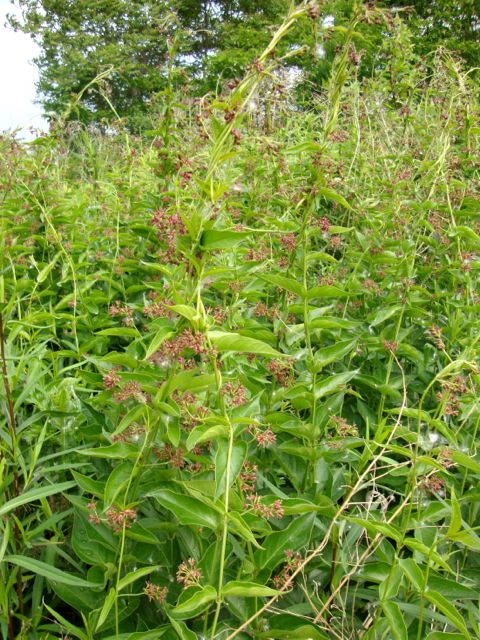 |
| At this time of year, the stems start to twist together at the tops if no other support is handy. They also twine around trees, shrubs, fences, or any other stationary object. Perhaps you. |
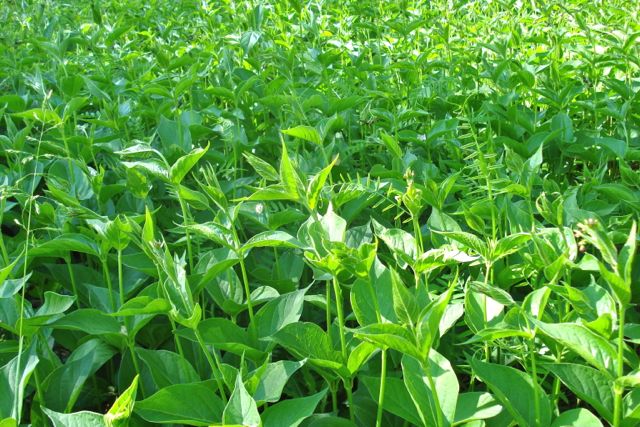 |
| Here is a close-up view. |


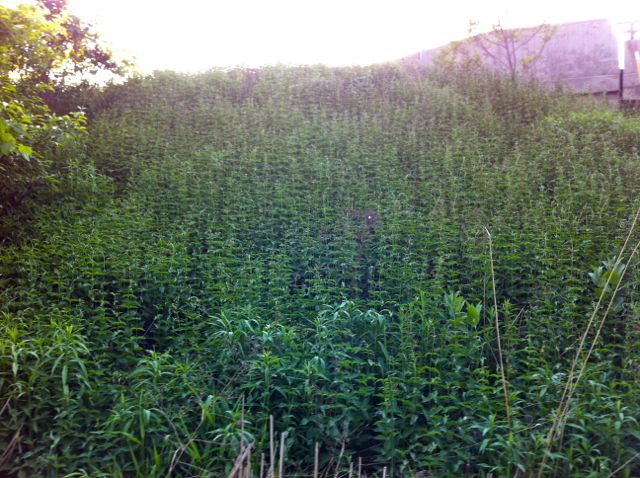


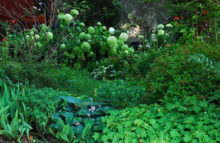
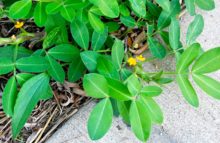
8 comments
What a scary plant. Bit like kudzu taking over down south
I agree. Thanks for posting about this very naaty invader!
Oh yes, I studied DSV as my undergrad thesis back in 2000/2001. It was a scary up-and-coming invasive species then and I'm sad, but not surprised, to see how bad its spread has become.
At a recent plant sale held by our Horticultural Society a few donated plants had to be tossed as there was dog strangling vine included in the pots. We must all be careful what we are potting up these days. Valerie
Scary!
Very interesting to read that it should be cut, not pulled. Every year, this plant causes itchy burning rash for my husband – and the rash spreads as badly as the plant. He's been getting it for several years but we just found out the irritant this year. Have you heard of this reaction, or how to manage the weeds and the rash?
Alison: Two suggestions, based on my research after your comment. First, milkweeds generally (and this being a cousin, likely, too) can cause an allergic reaction in some people. Perhaps your husband is unusually sensitive? Second, Wikipedia notes that DSV and poison ivy can be found together. Might this be the case? A Backyard Wisdom podcast on poison ivy that I just listened to suggested immediate washing with cold (never hot_ water if exposed to poison ivy as a possible antidote (worth a try) or carrying alcohol based wipes for on-the-spot cleansing.
Yes, Alison, I agree. I too was surprised that you cut it. Last year I read that you should get the roots out and bag it up which I did but this year, I got a very very bad rash that I can't seem to get rid of. As I am highly allergic to poison ivy and having read what Helen said, I am wondering now if indeed it is poison ivy. I was too late to get it washed before it spread so have been suffering about 2 weeks plus and the itch drives me absolutely crazy. Ice is the only thing that takes the itch away!! BTW, the internet said to scrub it with Dial soap, dry the area with a hair dryer and then apply rubbing alcohol.